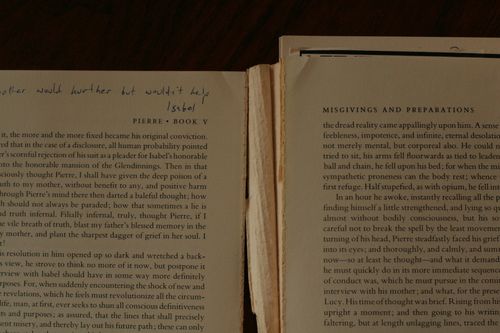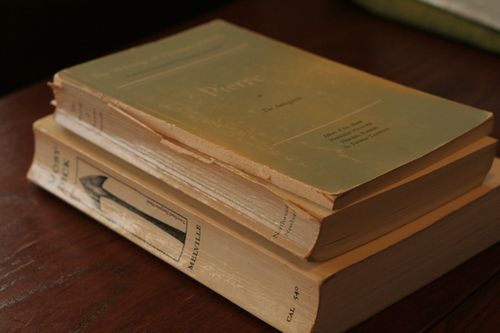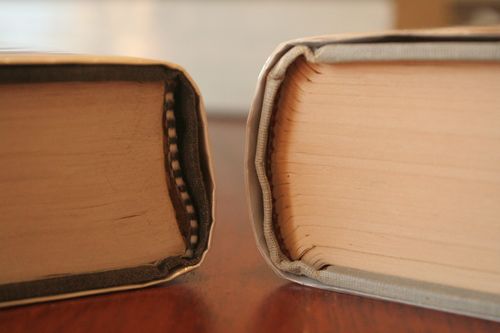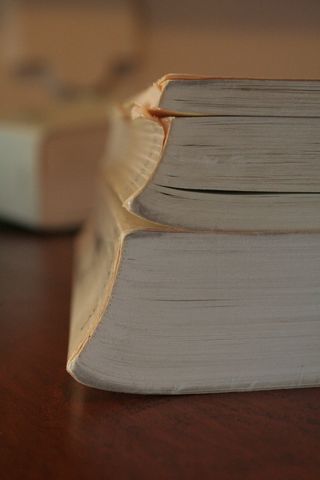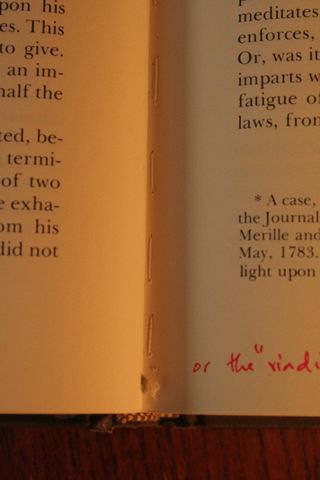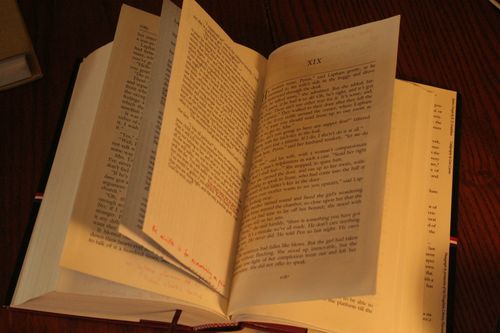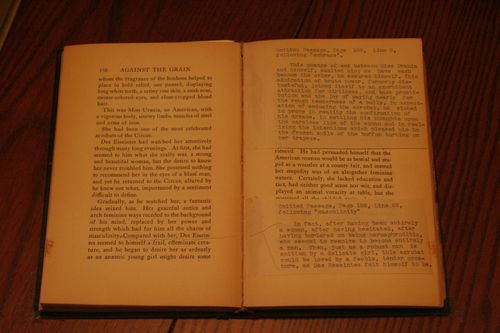I'm tempted to do something I don't usually do: write critically of a book that I have no intention of finishing. The book in question bothered me. I've been tussling with my botheration, trying to figure out what exactly I disliked, and I wonder if it will clarify my objections if I try to put them into words. Since it doesn't seem quite fair to the book to judge it without finishing it, I'm not going to name it or its author. This disguise is not meant to be impenetrable. Please understand the anonymity as a polite veil, not at all hard for an internet user of average resourcefulness to tear away.
As a reviewer, I'm sent a fair number of books by publishers, and I don't remember whether I happen to have requested this one, though I suspect I didn't. It arrived while I was suffering from a mild fever, a condition that's relevant because I won't be able to get to the bottom of my final dislike of the book unless I start with its initial appeal, which was considerable. I was feeling muzzy, bored, and a little vulnerable. My attention had been tenderized by a sick-day's indulgence in Twitter. The book in question is a novel, written in the first person. In the first few pages, in simple and declarative sentences, modestly spiced with British slang, the heroine-narrator lets herself be seduced into a risky sexual encounter. She enjoys herself intensely—the experience seems to fracture an idea of herself that she has—but she doesn't seem to have done this kind of thing before, and it isn't at all clear that she's going to be all right.
I kept reading, conscious that the plain grammar (subject-verb-object) and the explicit sex suited the debilitated state of my mind. The sentences practically read themselves. Sometimes, as a writer, one is aware that one also has the specious motive of doing something so as to be able to write about it later, and my conscious rationalization for continuing the novel included the somewhat recursive notion that if I did continue to read, I might be able to mine the experience for an essay about the kind of book that appealed to people who were spending too much time on Twitter and whose brains were befogged by toxins, viral or otherwise—about the limitations that the novel as a genre might have to accept in order to seize and hold attention in the current environment.
Less consciously, I had perhaps identified with the heroine, as someone who, like myself in an earlier era of my life, was putting herself in danger through a sexual responsiveness that she didn't understand.
My resistance to the text first became conscious to me in questions of style. Though technically written in the past tense, the short, plain sentences and their narrow time-focus gave the impression of a story unrolling in the present tense only. The heroine never thought about her past, though visits with a grandmother and with parents suggested that she did have one. She never reflected on how she had come to have the career that she did, or what had drawn her to her best friend, let alone on how she had become so cut off from her inner life that she could only return to it through episodes of violent, near-anonymous sex. This limitation in the telling of the story seemed one, however, with the urgency of the story's appeal. The narrator was Everywoman; the reader was not put at a distance by any details of her past or by any elements of her personality that the reader might not happen to share. On the contrary, the reader was constantly being invited to join in a fantasy: What if I were to have an irresponsible fling? What if I were to antagonize my friends? What if I were to mess up my safe but boring job? There was no awareness of anything in the heroine's life or mind that might hold her back. She was completely free. Or, to look at another way, her vanity and neediness were uncompromised by any consideration of other people as beings just as real as she was. The book began to remind me of Jay McInerny's Bright Lights, Big City, which I read twenty years ago when I was under the impression that I ought to keep up with best-sellers; the transgression began to seem monotonous in a similar way.
Because of the narrow focus—limited to the narrative's present, and to the perceptions of a narrator not motivated to understand anyone around her—a number of scenes had the flat feeling-tone of a certain kind of comedy routine, which depends for its success on the audience's collusion in a sadistic ridicule or dismissal of embarrassing feelings. Some of these scenes "worked" as jokes, but on second thought, seemed unlikely to be able to "work" in the real world. In one such scene, the heroine half-jestingly hits some children that she has been asked to take care of, and the children respond by precociously and coldly turning against her and voicing their hatred of her. I found myself thinking, well, in fact it is kind of awful of the heroine to have hit the children, but I doubt that real children would be able to find on such short notice sufficient insight and sufficient confidence to punish a faulty caregiver. In another scene, the heroine undresses while drunk for a man who is disgusted by her drunkenness, and I found myself thinking that if this character was charming enough to hold my interest as a reader, she probably wouldn't be the sort who, even drunk, would so badly misjudge the responsiveness of a potential suitor. In real life, she would have noticed his recoil, even through the haze of alcohol, before going quite so far.
I stopped reading when I found myself resorting to diagnosis of the characters. The heroine becomes obsessed with the man she has the sexual encounter with, despite his commandeering, abusive manner, or maybe because of it. He is portrayed as someone at ease with himself—at ease with his sadism and manipulation. Oh, I thought, a sociopath, charming and dangerous. And the heroine's focus on connection with him as the only source of meaning in her life: Oh, I thought, she's a borderline personality, who disintegrates unless she maintains contact yet needs the drama of always falling out of contact. It occurred to me that in real life the story of these two people would be so exhausting to hear about that it would be hard to stay focused, while listening, on how sad it was. In real life, it would end badly, unless disrupted by care and insight. It would probably end badly even if it were disrupted by care and insight. One way for it to end would be by his killing her. I thought of a book with a similar setup (whose plot and ending I will implicitly be giving away, in order to make my analogy, so look away if you need to), Muriel Spark's The Driver's Seat, though Spark's heroine understands herself in a way that this novel's heroine does not seem to. Though I admire Spark and would be happy to re-read her Girls of Slender Means or Prime of Miss Jean Brodie, I didn't enjoy The Driver's Seat and have no intention of ever re-reading it. Once I made the comparison, I couldn't bear to keep reading the novel at hand—the thought of having to sit through the tedium of a borderline's relationship with a sociopath, only to be punished for my patience with an unhappy ending, was too much.
Does he kill her? I flipped to the end. (Spoiler ahead, obviously; if you think you might track down this book and read it despite me, stop reading now.) It turns out that the author—in a reversal of expectations that to my eye again functions better as a joke than as a plausible rendering of human experience—gives her heroine the opportunity and the strength of purpose to kill her beloved torturer. I don't think this is really a happier ending than it would be if he killed her; it certainly wasn't an ending that I wanted to spend any amount of time or effort reaching, once I knew it. What keeps Spark's Driver's Seat interesting (though it remains unpleasant) is that the borderline personality in that novel fails to find the sociopath she's looking for and has to make do with another personality type altogether, by blackmailing him. There's no such complexity of motive and outcome in the new novel. I don't think the unexpected reversal would have any chance of convincing a reader if it weren't for the stylistic constraints on its telling, which make it harder to see how unlikely it is—if it weren't for the impairments that also function as appetite stimulants.
Admittedly, I broke the rules of the reader-writer contract. It's possible that if I read every word of the novel in sequence, I would find the reversal of roles at the end psychologically plausible. I doubt it, though. I suspect that if such "funny," impoverished consciousness—the final triumph of "showing" over "telling," in the specious language of writing instruction—is the only way to hold attention in a splintered world, the novel is in trouble. If the novel must always be recapturing the reader's attention, by prurient means, the novel is in the plight of a needy borderline, doomed to tedious pursuit of the cruel, elusive reader, who alternates between taking his pleasure from the book and dropping it for more compelling pleasures elsewhere. My own reading pattern here—beginning to read almost in scorn for the book, finding itches scratched by it almost despite myself, ultimately dismissing and abandoning the book—is weirdly complicit. I've even kept my encounter with the book, like the heroine's with her sociopath lover, anonymous, as if my meeting with this book were somehow disreputable for both of us. I must have fallen more under its spell than I realized. For the sake of disenchantment, then, maybe I should reveal the name of the book after all: True Things About Me, by Deborah Kay Davies. It comes out next week in paperback from Faber & Faber.


